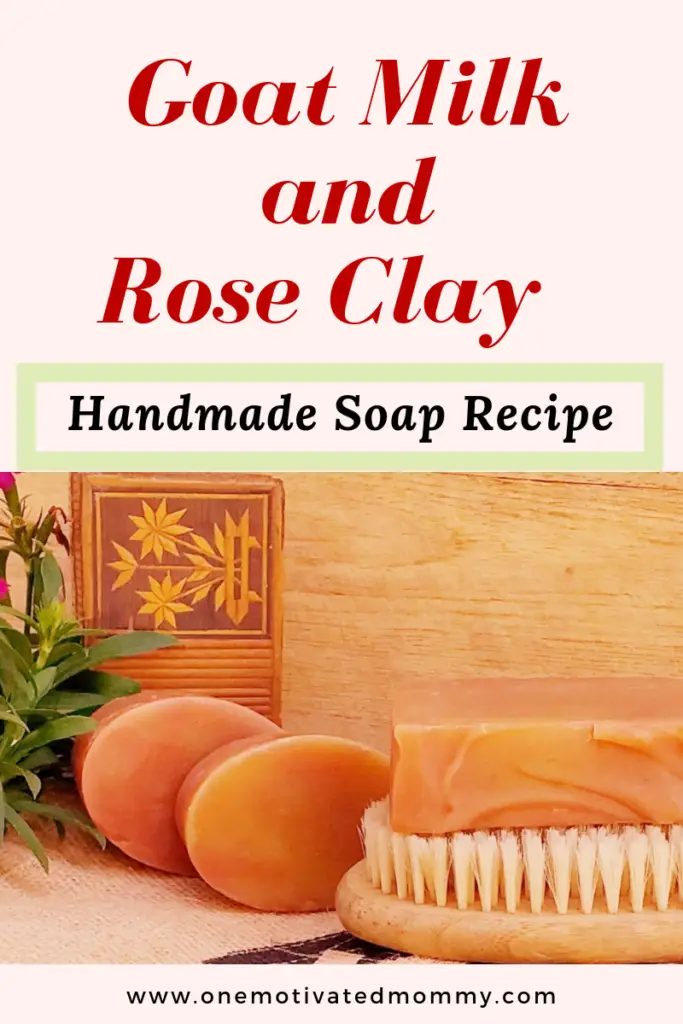This goat milk and rose clay soap is absolutely divine. With a creamy and luxurious lather, you will surely feel like you are experiencing a day at the spa.
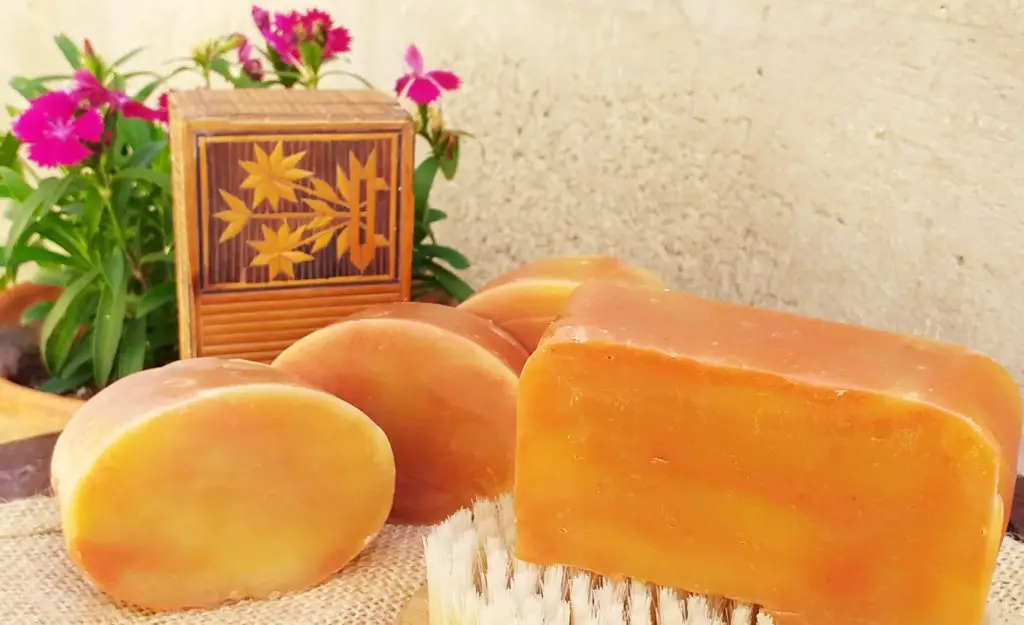
Goat milk soaps are popular among users of handmade soaps as they are gentle yet have many benefits for the skin.
Goat milk contains alpha hydroxy acids, such as lactic acid, which can help remove dead skin cells. It is also an excellent moisturizer because is rich in natural lipids, which lock in moisture and help maintain the ideal pH level of your skin.
It also contains skin-nourishing vitamins such as vitamins A, B12 and E and has natural anti-bacterial properties which help to treat skin conditions like acne or eczema.
I was able to source fresh milk from one of the goat farms in my area, but if you do not have ready access to a goat farmer, you can check your local supermarket to purchase canned or powdered goat milk.
In the case of powdered milk, follow the instructions on the package to mix then proceed with the directions in this soap recipe.
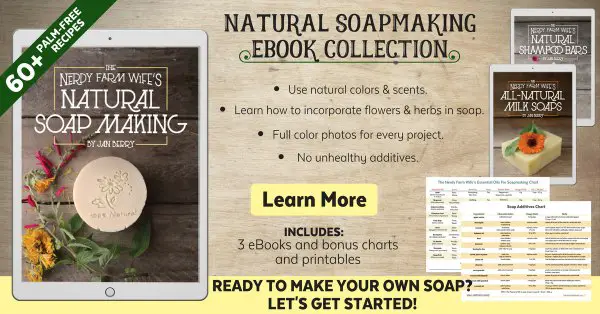
Homemade Goat Milk and Rose Clay Soap
Ingredients
- 4oz Castor Oil
- 2oz Cocoa Butter
- 12oz Coconut Oil
- 8oz Olive Oil
- 2oz Shea Butter
- 10.6oz Frozen Goat Milk
- 4.11oz Sodium Hydroxide (lye)
- 1oz Fragrance or essential oil (optional)
- 1 rounded teaspoon Rose Clay
Directions
Freeze the goat milk overnight in ice cube trays before making your soap. This step is necessary to prevent the lye from scorching the milk as it heats up during the reaction.
When you are ready to make your soap, suit up with protective gear – safety goggles, long sleeves and gloves.
*Related Post: How to Start A Soapmaking Business
In a heat-proof container weigh out the frozen goat milk.
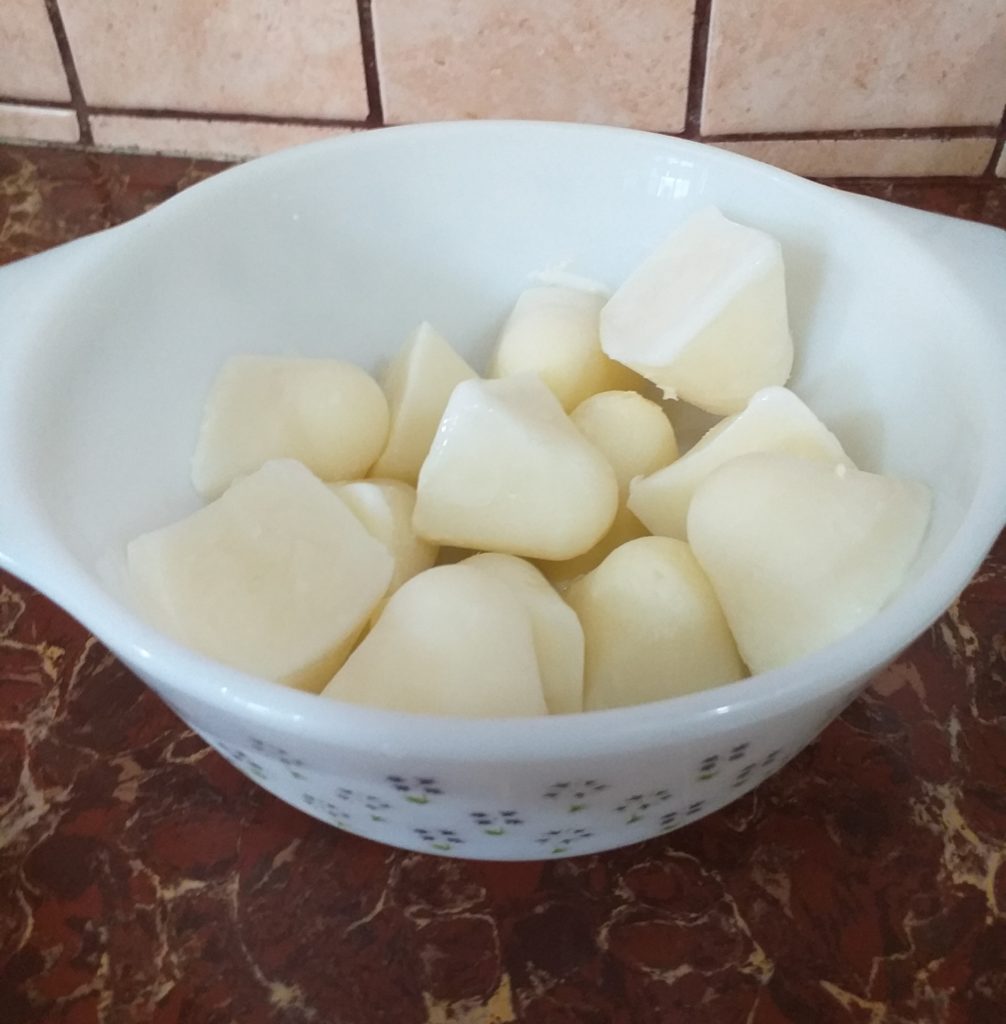
Next, weigh the lye in a plastic container. Pour the lye onto the goat milk and using a stainless steel spoon stir it gently until all the milk is melted and the lye is completely dissolved.
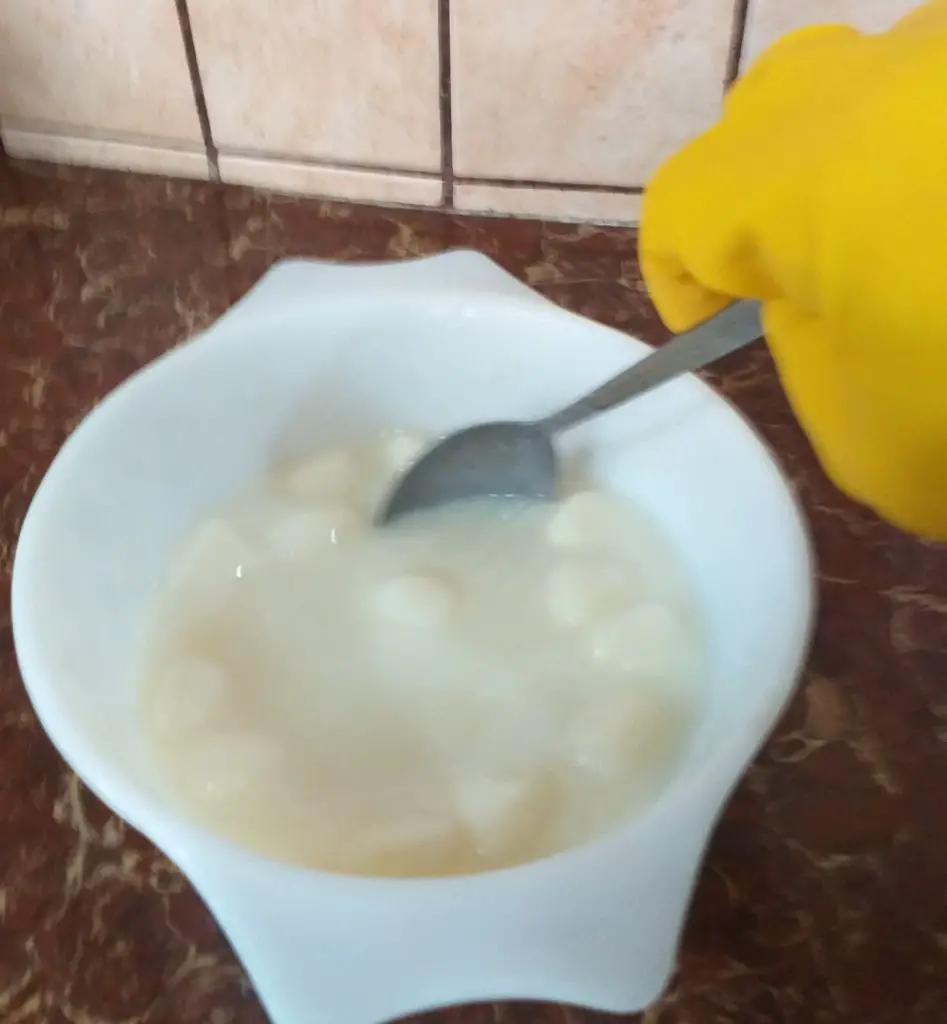
Set it aside in an area away from children, pets and curious family members.
Weigh out your shea and cocoa butter and place them together in a pyrex or heat-proof container. Heat the butters in the microwave or double boiler just until melted. If your coconut oil is solid you will have to melt it as well.
Add all your measured oils and butters to your mixing bowl.
Weigh out your fragrance or essential oil and have it ready. The fragrance oil I used is Passionfruit Rose from Brambleberry, shown below, but you can leave this soap unscented if you choose.
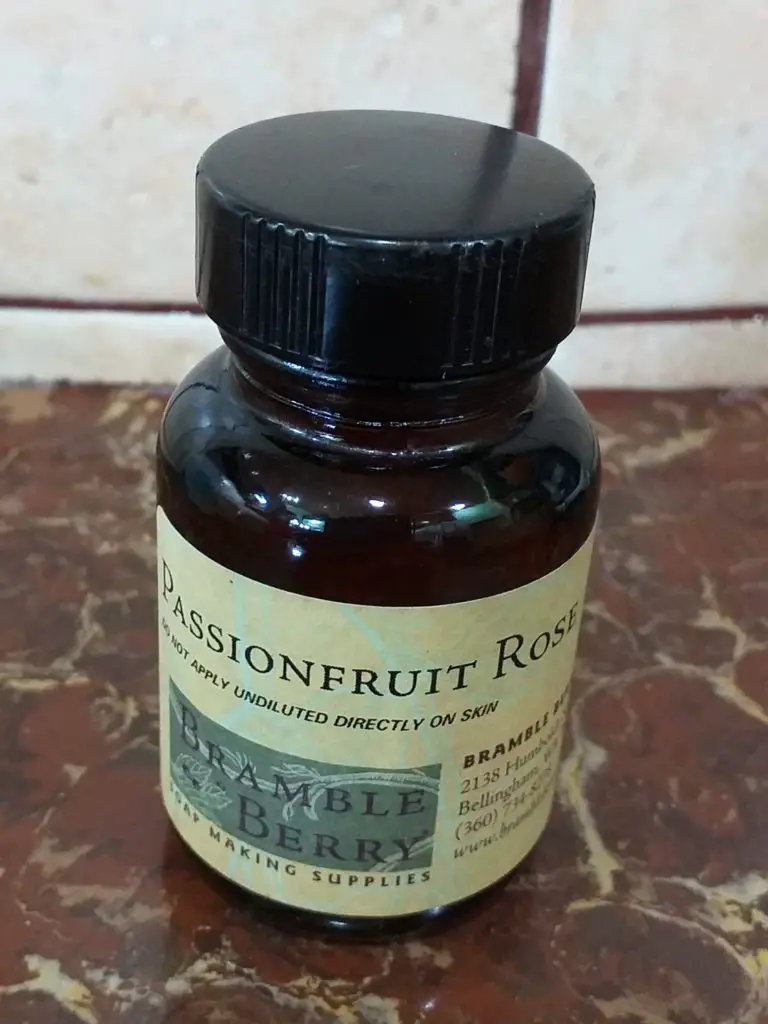
Prepare your rose clay in a small container by mixing it thoroughly with about a tablespoon or two of oil.
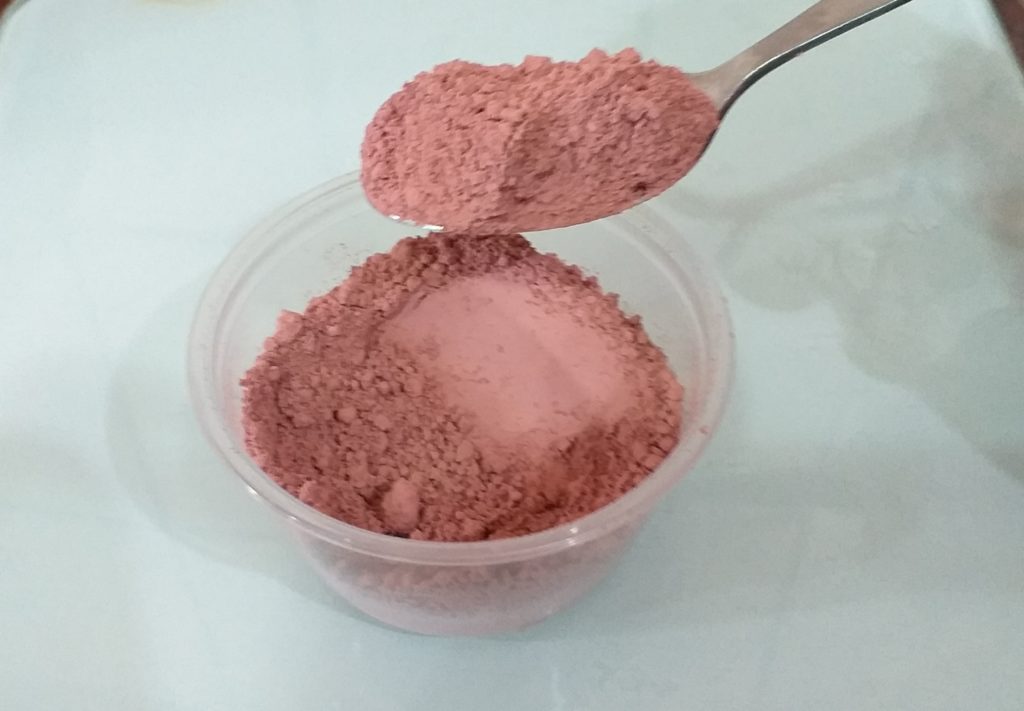
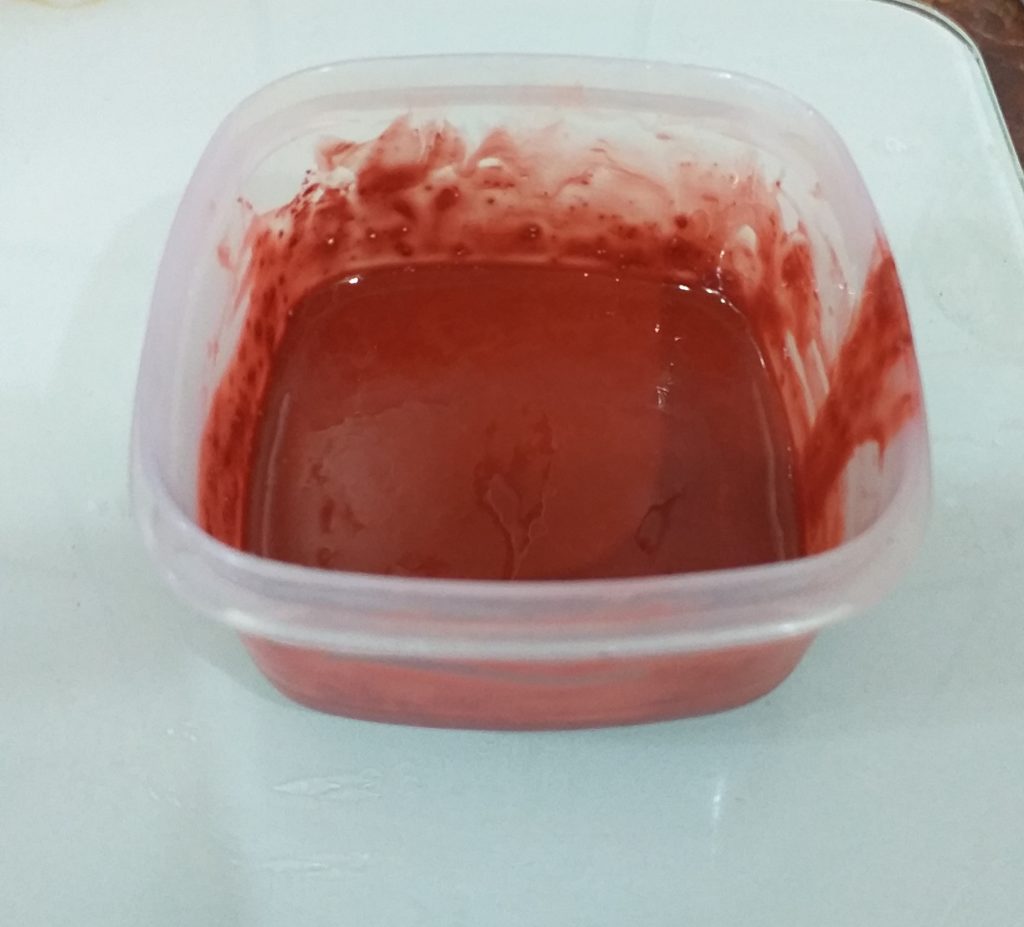
Add the lye and goat milk mixture to the oils and using the immersion blender, blend it in spurts until a light trace is reached.
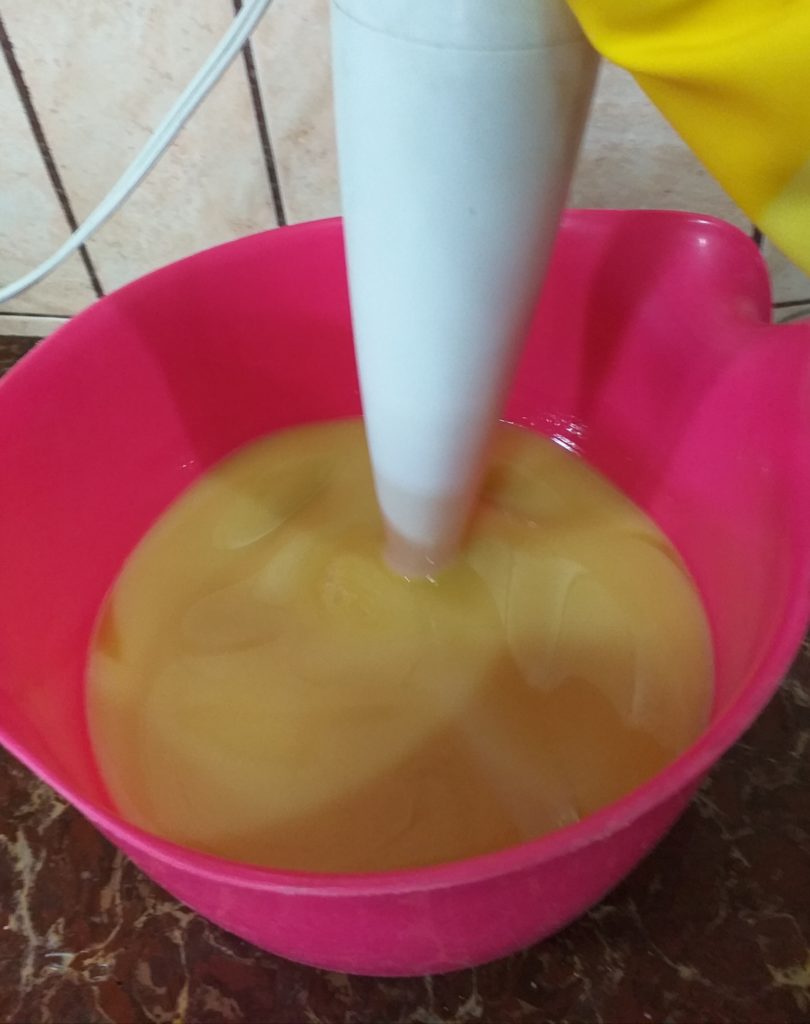
Next, add your fragrance or essential oils and stir it with the blender using a few light pulses, just enough to incorporate the fragrance fully into the soap batter.
Pour half of your soap batter into another container and add the rose clay, stirring it in thoroughly. This will make that portion pink.
Pour the pink soap back into the original soap batter and using a wooden skewer or stainless steel spoon, mix the two colours together only enough to create a swirl and not completely blend the two colours.
Pour your soap into the mould and put it in a safe, well-ventilated place to set for about 24 hours.
After 24 hours your soap should be solid and ready to come out of the mould. Remove it from the mould and cut it into bars if necessary, depending on whether you used a loaf or a cavity mould. In this case, I used both types.
Place your bars of soap in an open area to allow it to cure for 4 to 6 weeks. Turn the soaps occasionally to allow all sides to be exposed to air.
After the curing period, enjoy your beautiful creamy goat milk and rose clay soaps.
